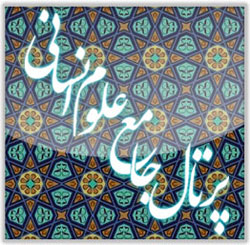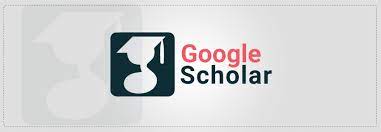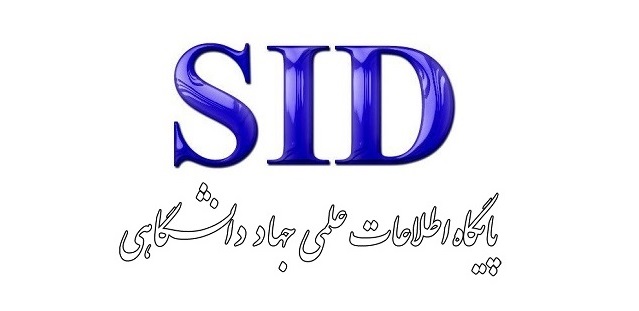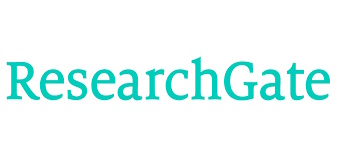Identifying the Different Aspects of Influencers’ Role in the Lifestyle of Teenagers in Tehran
Keywords:
Role-playing, Influencers, Teen LifestyleAbstract
This study aimed to identify the dimensions and components of influencers’ role in shaping the lifestyle of teenagers in Tehran. This applied and qualitative research used a meta-synthesis approach combined with content analysis of semi-structured interviews. The study population included media and cyberspace specialists, academic experts, and theoretical and empirical studies from domestic and international databases. Sampling was purposive and followed a systematic exclusion process guided by the PRISMA model. Data were collected through systematic literature review and semi-structured interviews and analyzed using thematic analysis with Maxqda software. Validity was confirmed using a 27-item PRISMA-based checklist, and reliability was established by Cohen’s kappa coefficient. The analysis revealed four main dimensions of influencers’ role in teenagers’ lifestyles: (1) influencing consumers by fostering trust, encouraging purchase behaviors, and shaping consumption attitudes; (2) producing creative content through innovation, diversity, and interactive engagement to attract and retain followers; (3) connecting with brands via direct advertising, brand consulting, and collaborative campaigns that impact brand identity and consumer tendencies; and (4) fulfilling social roles by promoting positive culture, raising social awareness, and participating in cultural and charitable activities. Influencers have a multifaceted and sometimes contradictory role in shaping the lifestyles of Tehran’s teenagers. While they provide opportunities for education, cultural development, and economic engagement, they can also promote consumerism, unrealistic standards, and psychological risks. Strengthening media literacy among adolescents, supporting socially responsible influencers, and implementing effective cultural policies can amplify positive impacts and mitigate potential harms.
Downloads
References
Abbasi, & Jafari. (2020). The influence of Instagram activities of celebrities on the lifestyle of Iranian users. Communication Research, 101(27), 33-54. https://cr.iribresearch.ir/article_40327.html
Ahmad, B., Mahmood, A., Sami, A., & Haider, M. (2023). Food choices, clothing patterns and interpersonal relations: effects of social media on youth's lifestyle. Biological and Agricultural Sciences Research Journal, 2023(1), 23. https://doi.org/10.54112/basrj.v2023i1.23
Ardesch, F., van der Vegt, D., & Kiefte-de Jong, J. (2023). Problematic social media use and lifestyle behaviours in adolescents. Jmir Pediatrics and Parenting. https://doi.org/10.2196/46966
Basirian Jahromi, K., & Tusi. (2020). Representation of the lifestyle of Iranian male beauty influencers on Instagram. New Media and Satellite Studies, 23(2), 29-58. https://www.noormags.ir/view/en/articlepage/1751393/
Braun, V., & Clarke, V. (2022). Conceptual and design thinking for thematic analysis. Qualitative Psychology, 9(1), 3. https://doi.org/10.1037/qup0000196
Dunn, S. S., & Nisbett, G. S. (2025). College NIL Athletes as Social Media Influencers: Examining Sports vs Lifestyle Posts on Consumer Perceptions. International Journal of Sports Marketing and Sponsorship. https://doi.org/10.1108/ijsms-08-2024-0194
Fitriasari, D. (2025). The Effect of Influencer Popularity on Purchase Decisions Among Gen Z Consumers: Case Study of Scientific Skincare Products. Golden Ratio of Marketing and Applied Psychology of Business, 5(2), 471-485. https://doi.org/10.52970/grmapb.v5i2.1092
Gul, O., & Koç, B. M. (2025). The Relationship Between Social Media Addiction and Eating Disorders Among Followers of Social Media Influencers. Iranian Journal of Public Health. https://doi.org/10.18502/ijph.v54i2.17909
Hashemi Sanjani, S., & Zinli, P. (2023). Predicting family function and parenting styles based on the level of media and virtual communication network use by parents. Cultural and Educational Journal of Women and Family, 18(63), 287-304. https://jms.ihu.ac.ir/article_207860.html?lang=en
Khademian, T., & Kalhori, M.-J. (2020). The relationship between Instagram and young people's inclination towards a modern lifestyle (A case study: Youth in Tehran). Communication Research, 27(101), 55-74. https://cr.iribresearch.ir/article_40326.html
Khajeh, N., & Soroosh. (2014). Media use, lifestyle, and quality of life among youth in Shiraz. Social Sciences Journal of Ferdowsi University of Mashhad, 11(2), 25-49. https://social.um.ac.ir/article/view/article_25617.html
Kianpour, R.-Z., & Hashem, Z. (2023). Factors influencing fertility with an emphasis on virtual social networks. Cultural and Educational Journal of Women and Family, 18(64), 37-53. https://cwfs.ihu.ac.ir/article_208384.html
Leban, M., Thomsen, T. U., von Wallpach, S., & Voyer, B. G. (2021). Constructing personas: How high-net-worth social media influencers reconcile ethicality and living a luxury lifestyle. Journal of Business Ethics, 169, 225-239. https://doi.org/10.1007/s10551-020-04485-6
Li, J. (2024). The Use of Social Media in Sustainable Green Lifestyle Adoption: Social Media Influencers and Value Co-Creation. Sustainability, 16(3), 1133. https://doi.org/10.3390/su16031133
Moghaddam, I.-Z., & Saheb, D. (2023). Influencer marketing: Identifying and explaining the psychological effects of social media influencers on consumers (A case study: Female students at Mazandaran University). New Marketing Research, 13(3), 23-48. https://nmrj.ui.ac.ir/article_27802.html?lang=fa
Mustafa, M. Y., Rauf, D. I., & Killa, B. A. (2023). Consumer behavior: Lifestyle, social media and peer friends on consumptive behavior online shopping for fashion products on the tiktok platform: Study on management students of Makassar State University. International Journal of Humanity Advance, Business & Sciences, 1(1), 33-42. https://malaqbipublisher.com/index.php/IJHABS/article/view/19
Namati Aghdam, M. G., & Kia. (2022). Analyzing the role of virtual networks in promoting fashion: Typology and pathology with an emphasis on Instagram. Media Studies, 17(3), 21-30. https://www.noormags.ir/view/en/articlepage/2005271
Oktaviani, D. (2020). Influence of Social Media on Student Lifestyle in Metro City. Arkus, 6(1), 80-85. https://doi.org/10.37275/arkus.v6i1.79
Pourarian, H., Naderi Nasab, M., & Biniaz, S. A. (2025). Evaluating the Role of Social Media in Promoting Health-Oriented Lifestyles and Behavioral Change: A Health Management Approach. AI and Tech in Behavioral and Social Sciences, 1-10. https://journals.kmanpub.com/index.php/aitechbesosci/article/view/3049
Putri, K. Y. S., Setiawan, B., & Fathurahman, H. (2024). Social Media or Word of Mouth: Maintaining a Healthy Lifestyle During the COVID-19 Pandemic in Indonesia. International Journal of Innovative Research and Scientific Studies, 7(4), 1345-1353. https://doi.org/10.53894/ijirss.v7i4.3296
Rezaiyan, & Adrisi. (2018). The impact of social networks on the lifestyle of the fourth generation. Scientific Journal of Intercultural Studies, 13(34), 9-35. https://www.sid.ir/paper/513266/
Sahu, M., Gandhi, S., Sharma, M. K., & Marimuthu, P. (2020). Social media use and health promoting lifestyle: an exploration among Indian nursing students. Investigación Y Educación en Enfermería, 38(2). https://doi.org/10.17533/udea.iee.v38n2e12
Sururin, S., Nawawi, M., Subchi, I., & Amyn, I. M. (2021). The Portrait of Social Media on Students' Lifestyle and Education Culture. Tadris: Jurnal Keguruan dan Ilmu Tarbiyah, 6(2), 287-295. https://doi.org/10.24042/tadris.v6i2.9039
Xi, Y. (2023, May 19-21, 2023). Social Media and Lifestyle: The Lifestyle Integration Path for Brand Communication. Proceedings of the 2nd International Conference on Bigdata Blockchain and Economy Management, ICBBEM 2023, Hangzhou, China. https://link.springer.com/article/10.1007/s10660-023-09719-z
Downloads
Published
Submitted
Revised
Accepted
Issue
Section
License
Copyright (c) 2025 Zahra Jafari, Ali Fallh, SeyedehShayesteh Varedi, Seyed Ahmad Jafari, Saheb Ahmadi (Author)

This work is licensed under a Creative Commons Attribution-NonCommercial 4.0 International License.









